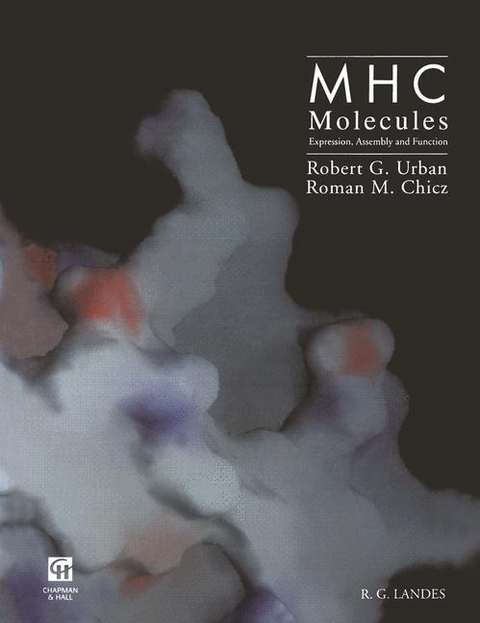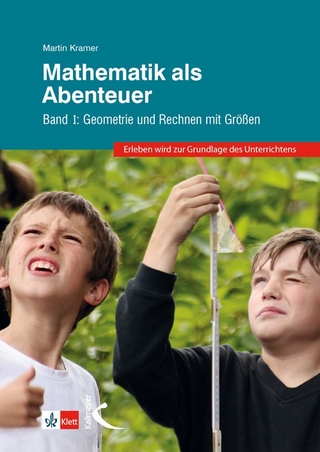
MHC Molecules: Expression, Assembly and Function
Springer-Verlag New York Inc.
9781468464641 (ISBN)
- Titel wird leider nicht erscheinen
- Artikel merken
1. Major Histocompatibility Antigens: An Introduction.- 2. The Major Histocompatibility Complex Genes and Their Transcriptional Regulation.- The Murine Major Histocompatibility Complex.- The Major Histocompatibility Complex of Humans, the HLA.- Developmental and Tissue-Specific Expression of MHC Genes.- Role of Aberrant Expression of MHC Gene Products in Immunologic Disease.- Cis-Elements and Transcription Factors That Control MHC Class I Gene Expression.- Factors and Elements That Control MHC Class II Gene Expression.- Models of Activation and Repression.- Concluding Comments.- 3. TAP Peptide Transporters and Antigen Presentation.- Evidence for Peptide Translocation by TAP.- Tap Genes and Sequences.- TAP as Member of the ABC Transporter Family.- Structure and Assembly of the TAP Complex.- In Vitro Assays for Peptide Binding and Transport by TAP.- Sequence Specificity of Peptide Transport by Different TAP Molecules.- Relating Specificity to the Structure of Polymorphic TAP Molecules.- Length of Transported Peptides.- TAP-Dependent and Independent Presentation.- TAP and Disease.- Concluding Remarks.- 4. Molecular Chaperones in MHC Class I and Class II Biosynthesis and Assembly.- Introduction: ER Resident Molecular Chaperones.- Molecular Chaperones Implicated in Class I Biosynthesis and Assembly.- Molecular Chaperones Implicated in MHC Class II Biosynthesis and Assembly.- Quality Control of MHC Molecules Mediated by Molecular Chaperones.- 5. Polypeptide Release from Lysosomes.- Synthesis and Transport of Lysosomal Hydrolases.- Entry of Degradation Substrates.- Lysosomal Hydrolysis.- Polypeptide Release from Lysosomes.- Possible Immunological Relevance.- Conclusion.- 6. Intracellular Trafficking of MHC Class II Molecules.- Assembly of MHC Class II Molecules in the ER and Early Stages of Transport.- Processing Intermediates of Invariant Chain.- Post-Golgi Trafficking of MHC Class II Molecules and Sites of Invariant Chain Degradation.- Intracellular Sites of Assembly of Peptide:MHC Class II Complexes.- 7. The Role of HLA-DM in Class II Antigen Presentation.- DM Sequence and Structure.- Regulation of Expression.- Genomic Organization of DM Genes.- Evolutionary Considerations.- DM Polymorphism.- Analysis of DM Mutant Cells.- The Mechanism of DM Action.- The Biology of Antigen Processing.- The Biosynthesis and Maturation of Class II.- Conclusion.- 8. Crystallographic Analysis of Peptide Binding by Class I and Class II Major Histocompatibility Antigens.- Class I Major Histocompatibility Antigens.- Class II Major Histocompatibility Antigens.- Similarities and Differences Between Class I and Class II Major Histocompatibility Antigens.- 9. HLA and Disease: Molecular Basis.- Tissue Typing Techniques.- Epidemiological Analysis.- Paradigms of Diseases Associated with the MHC.- HLA-B27 and Ankylosing Spondylitis.- MHC II and Disease.- Concluding Remarks.- 10. Epitope Prediction Algorithms for Class I MHC Molecules.- Elucidation of Peptide-Binding Motifs.- Anchor Residues.- Peptide-Binding Assays.- Physical Basis for Peptide-Binding Motifs.- Prediction of Binding Peptides.- Exceptional Peptides.- Peptide Binding and Antigenicity.- Conclusions.- 11. Options for TCR Interactions: TCR Agonists, Antagonists and Partial Agonists.- Introduction: Smart and Dumb T Cell Receptors.- Full Agonists, Partial Agonists and Antagonists.- What Do TCR Partial Agonists and Antagonists Do?.- T Cell Development.- The Direction of Mature T Cell Responses.- The Two Edged Sword: Antagonists as Protectors and Perpetrators of Disease.- How Do Antagonist/Partial Agonists Work?.- Concluding Remarks.- 12. Role of Ligand Density in T Cell Reactions.- Background.- The Study of Peptides Recognized by CD8+ CTL.- What Determines the Efficacy of CTL-Mediated Target Cell Lysis?.- Role of Ligand Density.- Concluding Remarks.- 13. Cooperative Recognition of MHC Class II Molecules:Peptide Complexes by the T Cell Receptor and CD4.- TCR Recognition of MHC Class II:Peptide Complexes.- CD4 Binding to MHC Class II Molecules.- CD4 Interaction With the TCR:CD3 Complex.- Conclusions.- 14. Receptors for MHC Class I Molecules in Human Natural Killer Cells.- MHC Class I Molecules Inhibit NK Cell Cytotoxicity.- Murine NK Inhibitory Receptors.- Human NK Inhibitory Receptors.- A New Family of Immunoglobulin-Superfamily (Ig-SF) Genes Selectively Expressed in Human NK Cells.- Evidence That NK-Specific Ig-SF Genes May Encode Human Receptors for Class I Molecules.- NK Recognition of MHC Class I Molecules Is Mediated by a Complex System.- 15. The MHC in Host-Pathogen Evolution.- Selection Acting on the Human Host.- Pathogen Avoidance of T Cell Recognition.- Mechanisms of Decreasing Antigen Presentation.- Mechanisms of Avoiding T Cell Recognition of Specific Epitopes.- Perspective.- 16. Peptide-Mediated Regulation of Allergic Diseases.- The Role of CD4+ T Cell Subsets.- The Immunological Objectives of Allergy Therapy.- Regulation of Specific T Cells by Peptides.- Deviation of Thl/Th2 Phenotype of the Responder Population.- 17. Genetic Modulation of Antigen Presentation.- Vaccines.- Genetic Immunization for Viral Diseases.- Treatment of Autoimmune Disease.- Conclusion.
| Erscheinungsdatum | 20.12.2018 |
|---|---|
| Zusatzinfo | 37 Illustrations, color; 52 Illustrations, black and white; 89 illus., 37 illus. in color. |
| Verlagsort | New York, NY |
| Sprache | englisch |
| Maße | 216 x 280 mm |
| Themenwelt | Schulbuch / Wörterbuch |
| Geisteswissenschaften | |
| Sozialwissenschaften | |
| Schlagworte | Antigen • Antigen presentation • autoimmune disease • Cognition • Cytotoxicity • Diseases • Evolution • Histocompatibility • Identity • immunization • Immunoglobulin • Research • T Cell • Vaccine |
| ISBN-13 | 9781468464641 / 9781468464641 |
| Zustand | Neuware |
| Informationen gemäß Produktsicherheitsverordnung (GPSR) | |
| Haben Sie eine Frage zum Produkt? |
aus dem Bereich


